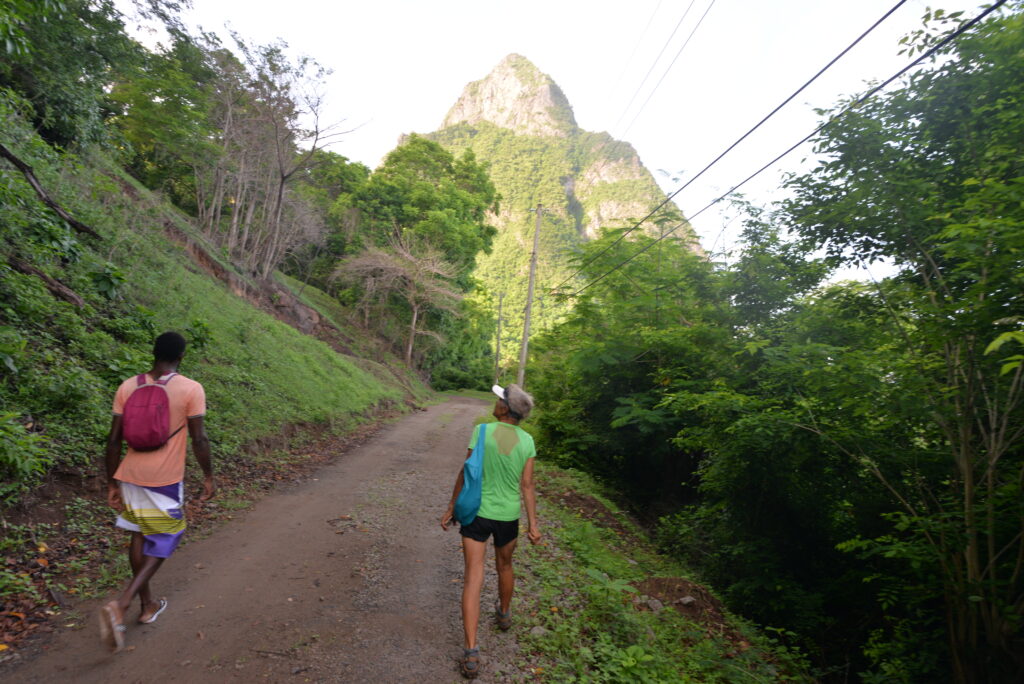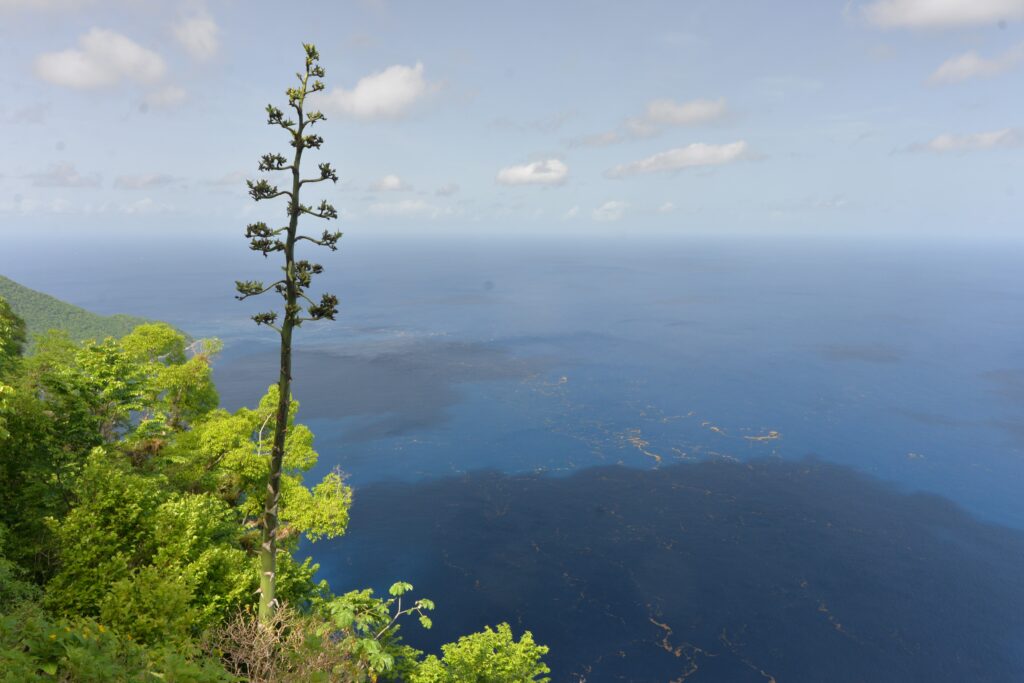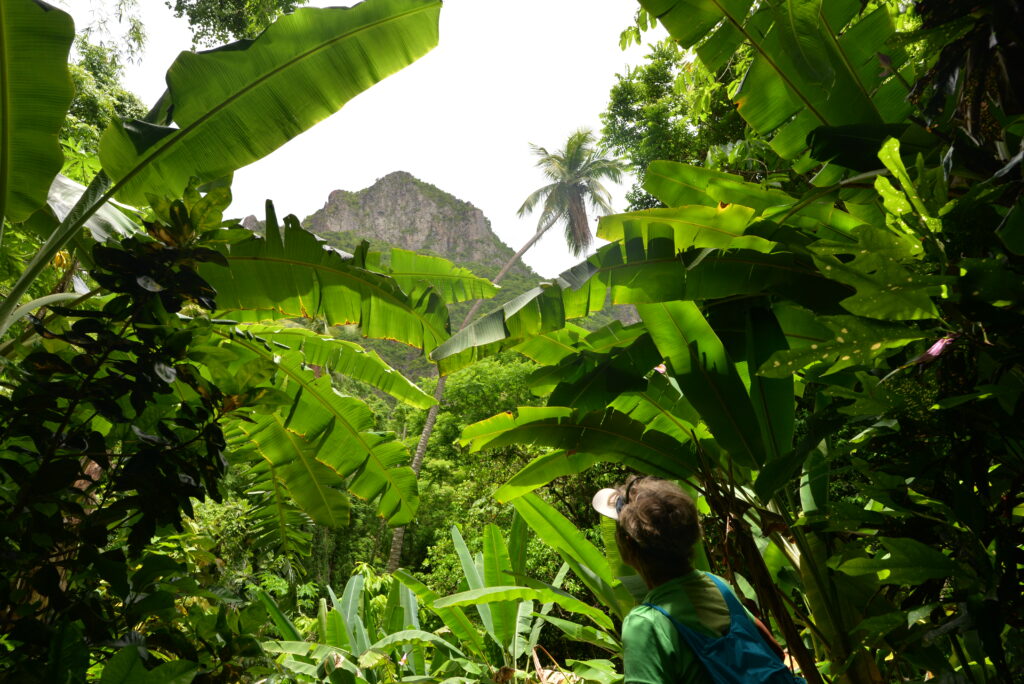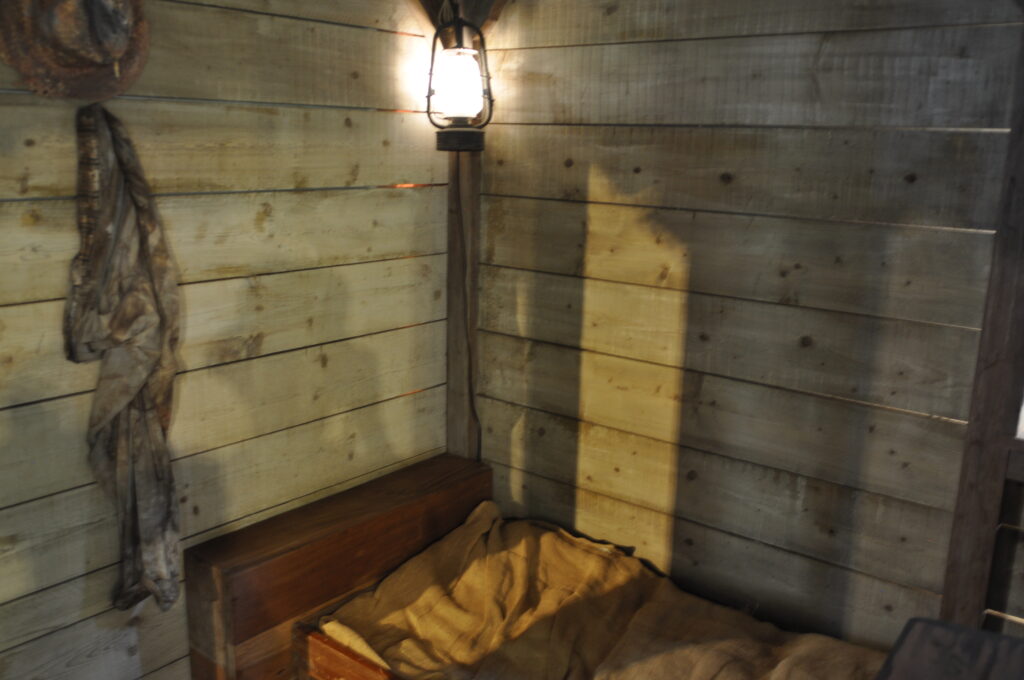
Saint Lucia: Climbing Petit Piton
Mooring on a buoy in Soufrière Bay pushed us to undertake the challenge of conquering one of the peaks of the Pitons. These two mountains, named Gros Piton (798m) and Petit Piton (743m), are among the highest volcanic plugs in the world and are included in the UNESCO World Heritage Sites. We chose Petit Piton because it was not only closer to us but also more difficult to climb, with some vertical ascents in places. Therefore, the ascent requires a guide, who turned out to be a local 28-year-old named John.
Climbing a mountain in the tropics is a big challenge, considering the high temperature and humidity. It is better to start as early as possible in the morning, so we hit the trail at 7 am. The first hour was relatively easy, but after 3/4 of the way, the climb became almost vertical, demanding quite a bit of physical fitness. Here, you start to remember that you’re not 28 years old anymore and recall the old advice of guides on the climb to Kilimanjaro: “Pole, pole, slowly, slowly.”
We finally made it to the top, and the view was breathtaking! After descending, we visited the Pitons waterfall with a hot spring pool, where we fully recovered our strength.






















Martinique: Saint Pierre
After sailing through quite windy weather, we arrived in Martinique. The first port where you can go through immigration control was St. Pierre. I had read that this town is called “Little Paris,” but I didn’t know about the tragic history associated with the eruption of the Mount Pelée volcano in 1902. The disaster completely destroyed the city, which was then the capital of Martinique, killing more than 20,000 people. The city has a museum dedicated to this disaster, where you can see many melted artifacts left after the huge pyroclastic flow that burned the city.
As we entered the bay, we encountered the Canadian sailing training vessel Picton Castle, which was anchored in Lunenburg near her home dock. The next morning, we saw her leaving the harbor under full sail; we learned on the Internet that she was heading back to Lunenburg, completing her eighth circumnavigation of the world.
Our stay in Saint Pierre was very pleasant. We enjoyed walking along the “Parisian” streets, visiting the disaster museum, the Eglise du Mouillage cathedral, and the ruins of the city theater. One of the most interesting visits was to the Paul Gauguin Museum, which celebrates the artist’s brief but impactful stay here in 1887. Gauguin was dazzled by the beauty of the island and the richness of its natural motifs. Shortly after his arrival, he settled with his friend and fellow artist Charles Laval in a hut located two kilometers from Saint Pierre. It was here that his famous tropically vibrant post-Impressionist style began to take shape, a style he would later fully develop in Tahiti.












































































